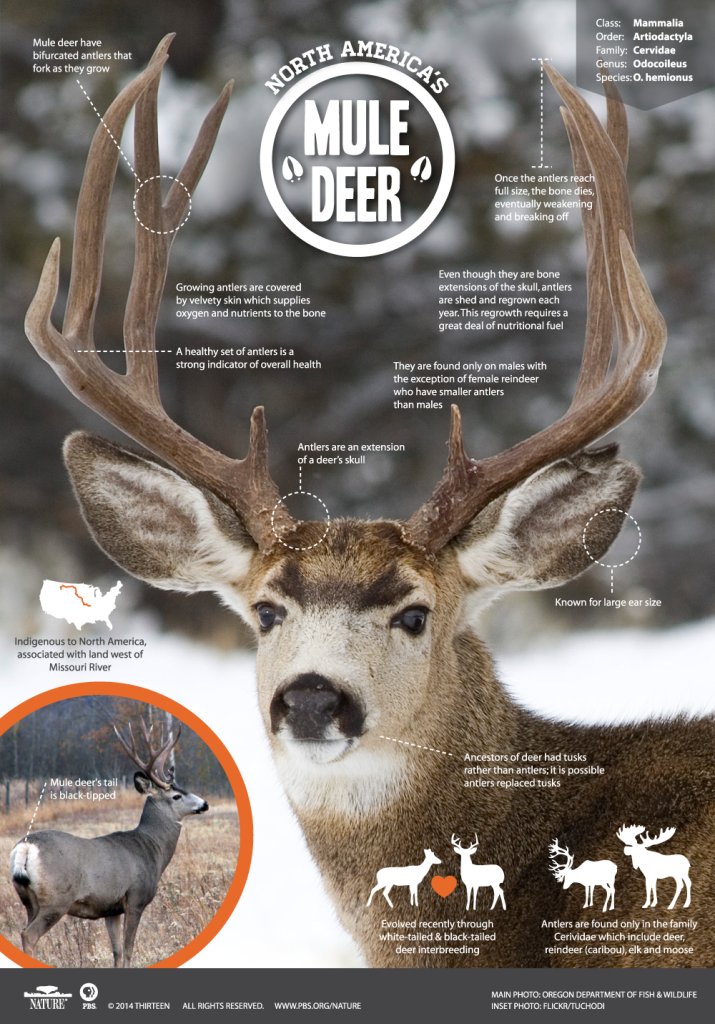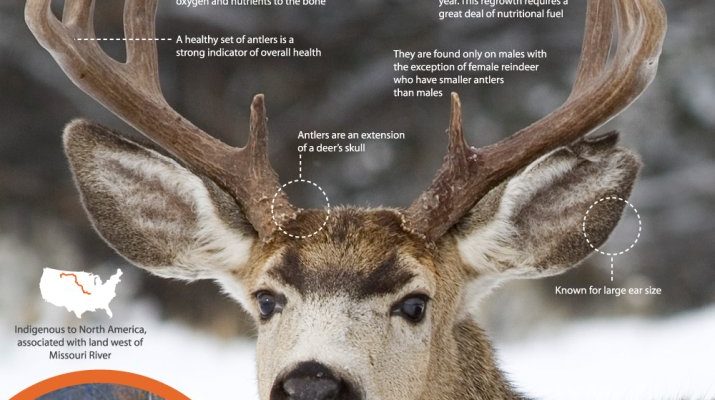
So, where do mule deer live? Think of their habitat as a cozy, tailored suit. It perfectly fits their needs, allowing them to forage, breed, and escape predators. These deer are primarily found in North America, mainly in the western United States and parts of Canada and Mexico. Let’s dive deeper into the specifics of where mule deer live, the types of habitats they prefer, and what these areas mean for their survival.
Geographical Distribution of Mule Deer
Mule deer are predominantly found across the western United States, Canada, and northern Mexico. Their range stretches from the Pacific Coast to the Rocky Mountains, showcasing a preference for diverse environments. You’ll find them in states like:
- California
- Oregon
- Washington
- Idaho
- Nevada
- Utah
- Arizona
- New Mexico
These regions offer mule deer an array of habitats, from dense forests to open grasslands. Their adaptability is impressive. Whether they’re navigating rugged mountain terrains or roaming through arid deserts, mule deer manage to find food and shelter in various conditions.
Preferred Habitats of Mule Deer
When it comes to selecting a home, mule deer are not too picky but have their favorites. They tend to thrive in environments that provide ample cover and food sources. Let’s break down some of the habitats they love:
1. Forested Areas: Mule deer often seek wooded habitats, especially coniferous forests. Here, the dense cover helps them hide from predators like mountain lions and coyotes.
2. Open Grasslands and Meadows: In contrast to forests, open areas allow mule deer to graze on grasses, shrubs, and forbs. These lush meadows are vital during spring and summer when food is plentiful.
3. High-Elevation Zones: During the warmer months, mule deer migrate to higher elevations. They prefer mountainous regions where snow melts early, providing early access to food.
Back in spring, you may find herds in lower elevations where they can munch on fresh, tender plants. But as winter approaches, they often migrate back to lower terrain, searching for warmer shelter and accessible food sources.
Seasonal Movement and Migration Patterns
Mule deer are known for their seasonal migrations. Here’s the thing—these movements are about survival. During certain times of the year, they’ll pack up and head to new areas to find food and suitable weather.
In the fall, as temperatures drop and snow begins to blanket the mountains, mule deer often move to lower elevations. This seasonal migration helps them avoid harsh weather and find food. In spring, they ascend again, heading back to higher altitudes as the snow melts.
Interestingly, these migration patterns can vary widely depending on geographical conditions and local deer populations. Some populations are more nomadic, while others stay relatively close to where they were born.
Impact of Habitat on Mule Deer Behavior
The habitat a mule deer chooses significantly influences its behavior. For instance, when they’re around dense shrubs and trees, they feel safer from predators, leading to more relaxed grazing and social interactions. Conversely, in open fields, their flight response heightens as they must be more vigilant for any signs of danger.
Additionally, habitat diversity is essential. In areas with mixed landscapes—like a combination of forest, open fields, and water sources—mule deer can find everything they need in one place. These diverse areas not only support their food needs but also provide shelter during different seasons.
Threats to Mule Deer Habitat
Unfortunately, mule deer habitats are under threat. You might be wondering why this matters. Well, the loss of natural habitats can severely impact mule deer populations. Here are some major threats:
1. Urban Development: As humans expand cities, natural habitats are destroyed. Many mule deer face challenges crossing roads and finding safe spaces.
2. Agricultural Expansion: Farms and ranches can limit the available land for mule deer, forcing them into smaller, less suitable areas.
3. Climate Change: Changes in temperature and weather patterns can affect the food that grows, altering the natural landscape in ways that aren’t beneficial for deer.
Conservation efforts are crucial. Protecting their habitats can ensure that mule deer populations remain healthy and sustainable.
Conservation Efforts for Mule Deer
Many organizations and government agencies are focused on preserving mule deer habitats. Conservation areas and wildlife corridors can help mitigate the impact of urban sprawl and habitat fragmentation. Here are some ways these initiatives work:
– Habitat Restoration: Planting native vegetation in degraded areas can help restore the balance of ecosystems. This gives mule deer a chance to thrive in environments that resemble their natural habitats.
– Wildlife Corridors: Creating safe passages can help mule deer move freely between habitats without the risk of road collisions with vehicles. These corridors are vital for maintaining genetic diversity within populations.
– Education and Awareness: Raising public awareness about the importance of mule deer habitats can encourage responsible land use and support conservation efforts.
By working together, we can help ensure that mule deer continue to roam freely in their natural habitats for generations to come.
So, where do mule deer live? Their habitats span a diverse range of environments, from dense mountains to vast meadows, depending on the season. By understanding their geographical distribution and preferred habitats, we can play a role in their conservation. Remember, preserving these natural spaces isn’t just about saving deer; it’s about ensuring that entire ecosystems remain vibrant and healthy.
The next time you see a mule deer, think of the beautiful habitats they depend on, and maybe feel inspired to support the efforts aimed at protecting their homes. The world is better with mule deer in it, don’t you think?

